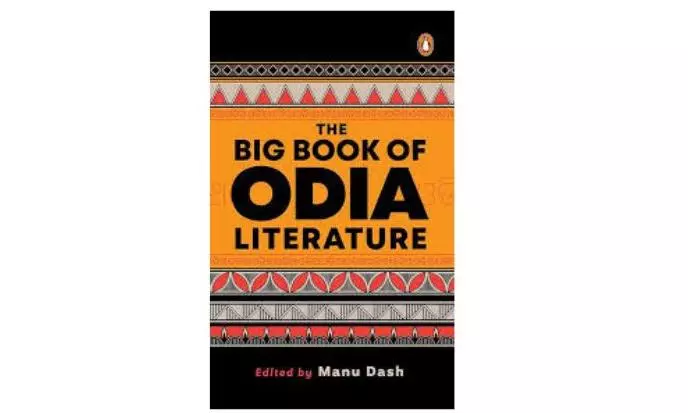Book Review | A showcase of Odisha’s rich literary tradition

In the mid-20th century Odisha, an anti-establishment movement emerged as a response to the socio-political tensions before and during the 1975 Emergency. It was named the Anam (Odia for “Nameless”) Movement. True to its name, despite having had an impact on Odisha’s literary and cultural spheres significant enough to pit them as potent weapons against the regime, it is not too widely known today. Odia poet Manu Dash, a leading figure of the Anam group of poets and writers, has since been an active participant in shaping the literature of the state. From organising various literary festivals to producing the Anam poetry journal and other curated volumes, he emphasises reading as a cultural practice. Dash’s The Big Book of Odia Literature, published by Penguin India, also forms a part of his continuing endeavour.
As if in response to the scant exposure that the movement has gotten through the years, we have been given a book that is essentially “Odia literature at a glance”. In the current context, “Odia” is not only a language but a cultural entity closely revolving around the personal and communal lives of its people. This becomes evident as one simply looks through the contents. The Big Book of Odia Literature brings together a wide range of well-curated poems, play excerpts, and prose works, both fictional and experiential, as well as translations from a number of languages of the region into English.
The anthology covers an impressive range of styles and eras. The opening section features the poetry of ancient poets like Sarala Dasa, Balarama Dasa, Salabega, and Jayadeva; medieval poets like Upendra Bhanja, and King Birakishore; early modern and modernist poets like Radhanath Ray, Mayadhar Mansinha, J.P. Das, Jayanta Mahapatra; and closes with contemporary writers such as Akhila Nayak and Akshaya Bahibala. The Big Book in the following sections contain excerpts from plays by Jagan Mohan Lal and Biswajit Das. In the two concluding sections of the book, one finds short stories of stalwarts like Fakir Mohan Senapati, Kalindi Charan Panigrahi, Binapani Mohanty, and Pratibha Ray, and essays of equally erudite personalities. Thus, the reader is sure to find themselves exposed to a wide variety of work, as is the aim of the book. The fact that it offers translations from new and emerging translators alongside luminaries of the past make it a fresh new addition to any library.
However, since the anthology casts a wide net, it seems to struggle to target any specific demographic. Another issue to note is a lack of focus as much on the rich performative heritage of Odisha, of which drama forms a major part. Unlike novels, short stories, or even modern Odia poetry, stage plays do not imitate a Western form but are quite original. Despite these flaws, The Big Book of Odia Literature is a fitting title for those looking for an extensive entry point into the Odia literary canon. The book stays true to its name, being expansive and varied, even if it sacrifices a little cohesion.
Ankit Rath is a DPhil scholar at the University of Oxford
The Big Book of Odia Literature
Ed. by Manu Dash
Penguin
pp. 728; Rs 699

